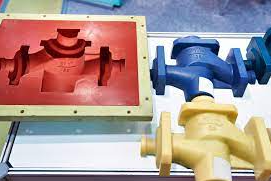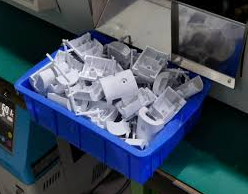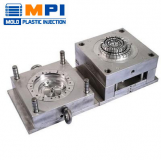The way we manufacture plastic goods has been transformed by plastic molding, a flexible manufacturing method. Plastic molding has developed into a vital technique for making everything from everyday products to complex parts for numerous industries. This article will examine what plastic molding is, its numerous forms, its benefits, and its effects on various industries. Therefore, let us explore the world of plastic molding and learn how it affects our future.
Introduction to Plastic Moulding
In the manufacturing process known as plastic moulding, plastic materials are molded into the necessary shapes. It offers a practical and economical method for producing plastic components with dependable quality and accuracy. Due to the process’s capacity to produce delicate features and complicated shapes, it is used in a variety of sectors.

The Process of Plastic Moulding
The design and construction of a mould, which acts as a template for shaping the plastic material, is often the first step in the plastic molding process. Durable materials like steel or aluminum are used to make the mold. When the mold is ready, the plastic material is melted and injected into the cavity of the mold in the form of grains or pellets. The final plastic product is released from the mould after cooling and solidifying.
Types of Plastic Moulding
Moulding by Injection
The most popular and commonly utilized method of plastic molding is injection molding. Under intense pressure, molten plastic is injected into a mold cavity. From microscopic precise bits to massive components, a variety of items can be produced using this method.
Blow molding
Hollow plastic items, such as bottles and containers, are made by blow molding. In this procedure, plastic is melted and shaped into a parison, a hollow tube. After that, pressurized air is used to inflate the parison, molding it to the cavity of the mold.
Rotational Moulding
Tanks and playground equipment are only two examples of the massive, hollow plastic items that can be produced using the rotational moulding technique. It entails heating and turning the mold so that the melted plastic coats the interior surface and takes the desired shape.
Thermoforming
Plastic sheets can be thermoformed into trays, blister packs, and disposable containers, among other shapes. To keep the proper shape, the plastic sheet is heated, stretched over a mold, and then chilled.
Advantages of Plastic Moulding
Versatility and flexibility
Plastic molding allows for the construction of intricate shapes and complex geometries because to its exceptional versatility and creative freedom. It is useful for a variety of applications across sectors because to its capabilities. Plastic moulding can bring any design concept to life, whether it is the slender curves of a car dashboard or the precise intricacies of a medical equipment
Cost-Effectiveness
Plastic molding is a practical manufacturing method, particularly for mass production. Because molds must be made, the initial tooling costs could be greater, but once the molds are in place, the production costs per unit drop dramatically. Plastic molding is a desirable choice for the mass production of plastic goods because to its cost effectiveness.
Rapid Production
The capacity to support quick production is one of the key benefits of plastic molding. The method enables high-volume production with quick cycle times, assuring prompt turnaround and effectively addressing market demands. Plastic molding production speed is constantly rising thanks to automation and technological improvements, which enables businesses to meet deadlines and shorten time-to-market.
Material Variety
Numerous plastic materials can be supported by plastic molding, giving producers the freedom to select the one that is best for their particular application. It does not matter if the plastics are flexible plastics like polyvinyl chloride (PVC) or rigid plastics like polyethylene; the variety in material choice enables the creation of specialized solutions that satisfy performance needs while also being durable and aesthetically pleasing.
Complex Geometry
An important benefit of plastic molding is its capacity to create items with intricate geometries. It makes it possible to combine several features, like undercuts, threads, and inserts, into a single molded part. This decreases production time, gets rid of the need for extra assembly steps, and raises the standard of the final product.

Plastic Moulding in Different Industries
Automotive
The automotive industry heavily relies on plastic moulding to produce a variety of parts, such as bumpers, dashboards, and engine parts. Without sacrificing design or safety, plastic molding provides lightweight alternatives to metal parts that increase fuel efficiency.
Consumer Goods
The manufacture of consumer items, including toys, kitchenware, electronic enclosures, and packaging materials, depends heavily on the use of plastic molding. Plastic moulding’s adaptability enables the development of creative designs and shapes that improve user experience and satisfy customer desires.
Medical and Healthcare
Plastic molding is essential to the manufacturing of medical devices, surgical instruments, drug delivery systems, and diagnostic tools in the healthcare and medical industries. Plastic moulding is essential to this business because it allows for the production of sterile, accurate, and biocompatible goods, ensuring patient safety and high-quality medical care.
Packaging
The packaging business uses plastic molding extensively to create containers, bottles, caps, and closures. Plastic packaging is convenient and economical due to its small weight, and it offers excellent protection for the packaged items. In order to draw customers, plastic packaging can also be personalized with distinctive shapes and branding components.
Electronics
Plastic molding plays a significant role in the fabrication of casings, connectors, switches, and other electronic components in the electronics sector. Intricate patterns, heat resistance, and electrical insulation characteristics of plastic moulding make it the perfect material for electronic applications.
The Future of Plastic Moulding
The future of plastic molding appears bright as technology keeps developing. The industry is experiencing advancements in sustainable practices, automation, and process optimization. Researchers are creating environmentally friendly, biodegradable plastics to lessen their influence on the environment. Additionally, improvements in 3D printing and additive manufacturing are transforming the plastic moulding industry by making it possible to make more intricate and customizable designs more effectively.

